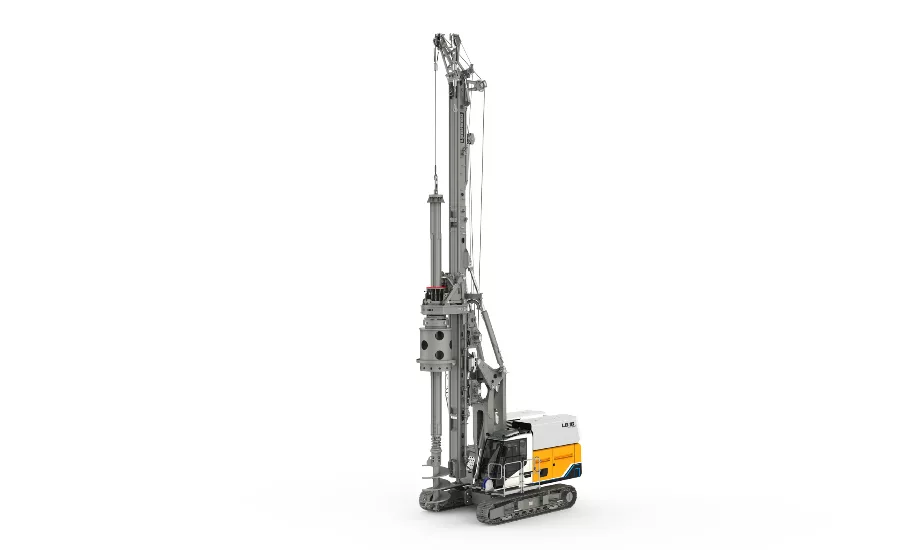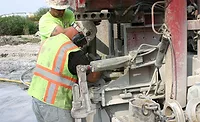What Does the Future Hold for Drilling, Construction Equipment?
Manufacturers, Like Ford and Tesla, have Electric Opportunities

Liebherr’s LB 16 unplugged debuted a few years ago. A few companies have experimented with hybrid or all-electric drills.
Source: Liebherr
The end of my year has seen a flurry of activity, between producing new curriculum for HAZWOPER refreshers and teaching drilling apprentice classes. I finally got a Sunday off to begin writing my December article.
As I sat there on likely one of Chicago’s last nice days this year, I began thinking about our industry and where it could head over the next 10 or 15 years. As I often do in these articles, I look to other similar industries for hints at the direction that we may go. One thing that surprised me this year is the public’s acceptance of electric vehicles, and not just any electric vehicle, but electric pickup trucks. As of this writing, Ford Motor Company reported they surpassed 160,000 reservations for their all-electric F-150 Lightning pickup truck. If you had asked me last year how well an electric pickup truck would do with the general public, I would have told you, “I’m not sure we’re ready for that.” Yet, Ford has such confidence in these numbers that they will invest $250 million more than originally planned and add 450 jobs to increase production capacity to 80,000 all-electric trucks annually.
Those numbers got me thinking. Is there a move to make construction equipment electric as well? The short answer is yes, and it’s already well under way. I remember 10 or so years ago my facility took delivery of a Caterpillar D7E hybrid electric bulldozer. We tested it for a cover story for “Construction Equipment” magazine. That machine boasted a 30% fuel savings, while increasing power over Cat’s other D7 in production. It was such a novel idea at the time that “Car and Driver” did an article of their own on the D7E. What advancements have we made since 2010 on making construction equipment more efficient?
Recently, I have seen a lot of movement by large equipment manufacturers to go to hybrid or all-electric platforms. Komatsu recently announced a new collaboration to electrify next-generation underground mining machines using battery technology from a company named Proterra. This is actually the second collaboration between Proterra and Komatsu. The two companies had previously teamed up to electrify Komatsu’s medium-sized hydraulic excavators (due for release soon).
J.H. Fletcher & Co. released its electric Model N3112-B/E, a man-up roof bolter, at Mine expo 2021. It adds to the company’s line of hybrid mining drills.
Liebherr release its LB 16 unplugged, an all-electric, battery-powered hydraulic foundation drill at a recent Bauma — the first foundation drill rig to go all electric. This unit is geared for the small- to mid-sized deep foundation drill projects, with a 60-ton operating weight with a maximum drilling torque of just shy of 138,000 foot-pounds able. It can drill over 200 feet with an auger up to 5-foot diameter. They designed the battery to last for 10 hours and recharged in as few as seven hours using a typical 125-amp jobsite battery supply. The power supply rates at 265 kW, which equates to 355 horsepower.
I find those stats impressive, but what really interests me is that operators report a drop in fatigue after working around the LB 16 unplugged over the course of a day due to the quiet nature of the machine. This may not sound like much, but noise pollution can post a big problem in urban jobsites. How often have you shut down the rig for the day and thought, “That silence is the best sound of the day”? Often, heavy equipment can reach over 110 decibels — what amounts to an assault on your hearing for the entire day. For context, a normal speaking voice averages around 65 decibels. Every three decibels doubles the amount of noise, leading to temporary or even permanent hearing loss or tinnitus. (See my article “How Important is Hearing Protection for Drillers?” in the September 2020 issue of The Driller for more.)
On top of reduced noise levels and the environmental factors of going electric, these machines have reduced service hours, lower ownership costs and often drastically reduce fuel costs.
On top of reduced noise levels and the environmental factors of going electric, these machines have reduced service hours, lower ownership costs and often drastically reduce fuel costs. Add to that the fact that electric motors deliver all of their torque from the first revolution, and you make a good case for improved efficiency for electric drills. Fellow contributor Brock Yordy and I recently discussed our wish lists for a drill. We both came up with high torque, and rotation that would allow for slow rotation or fast rotation speeds to have the most flexibility for different bits and drilling techniques. Electric-drive drill rigs could deliver just such flexibility.
So what holds our industry back? The cost for development, for one. U.S. drill rig manufacturers are not in a position to spend on this kind of resource. Our industry also tends to resist change and not adopt new technologies as readily as the construction industry. Lastly, current lithium ion technology requires large batteries. The battery in the LB 16 unplugged weighs in at seven times the size of a Tesla Roadster battery. Jobsites must have a relatively high-voltage charging station for overnight recharges or operators must start each day swapping in a large, freshly charged battery.
I truly believe these drawbacks are temporary. With improvement in battery technology, we can make a viable, all-electric water well drill rig capable of working on remote sites. Until that happens, I challenge our industry to adopt hybrid technologies. After all, which one of us couldn’t benefit from 30% reduction in fuel cost?
Until then, embrace new technology and don’t be afraid to utilize that all-electric pickup truck as the shop truck or parts runner, and always look for that safer or more efficient way to complete the task at hand.
Until next time, keep turning to the right!
Looking for a reprint of this article?
From high-res PDFs to custom plaques, order your copy today!





